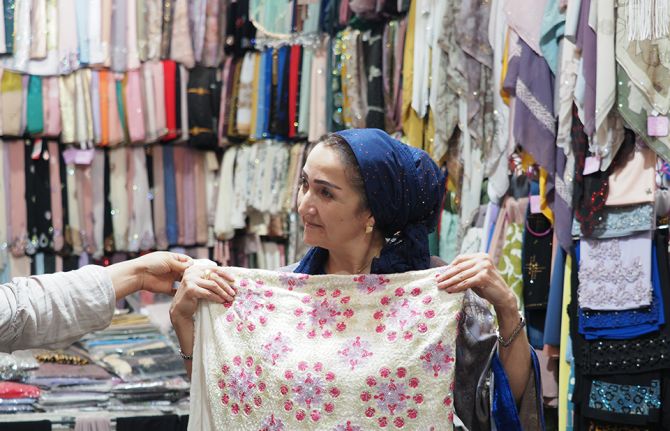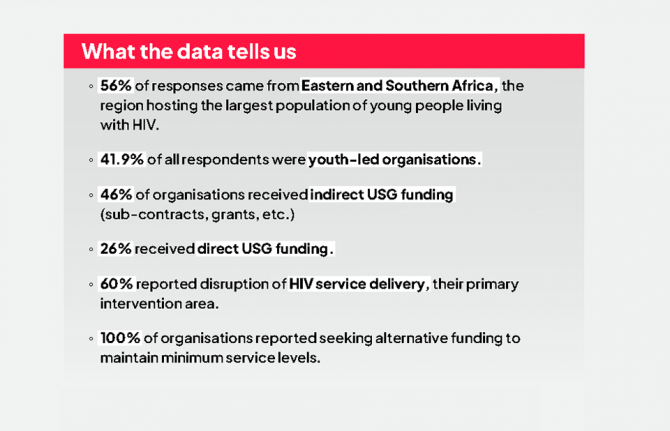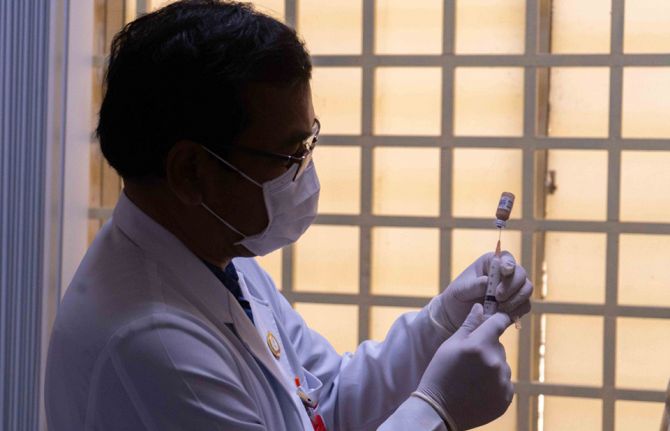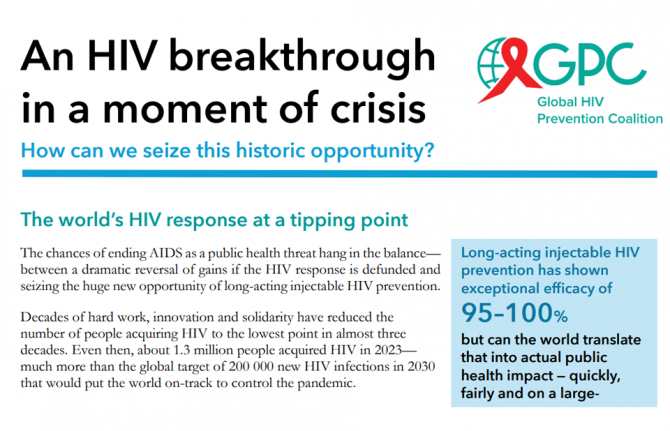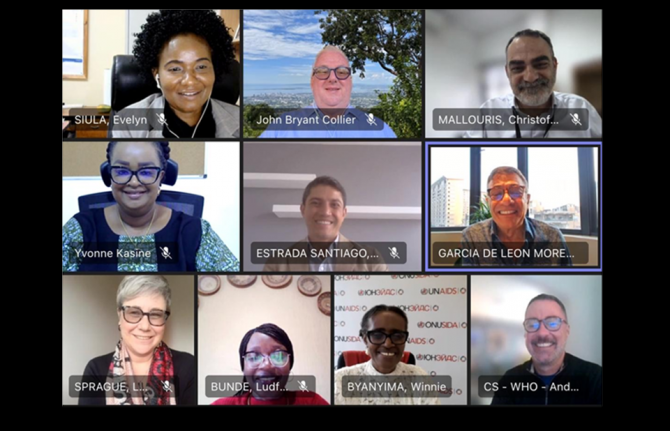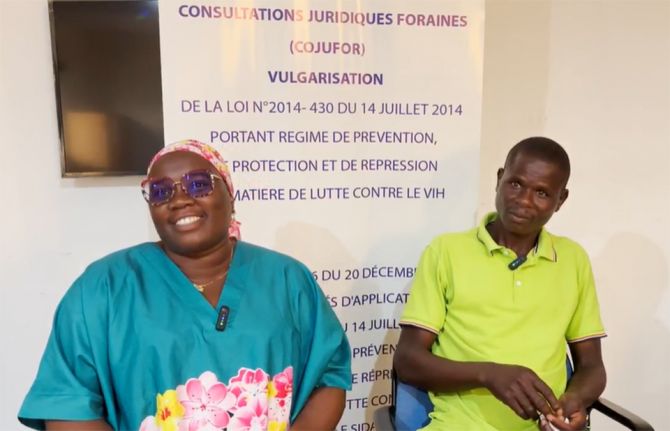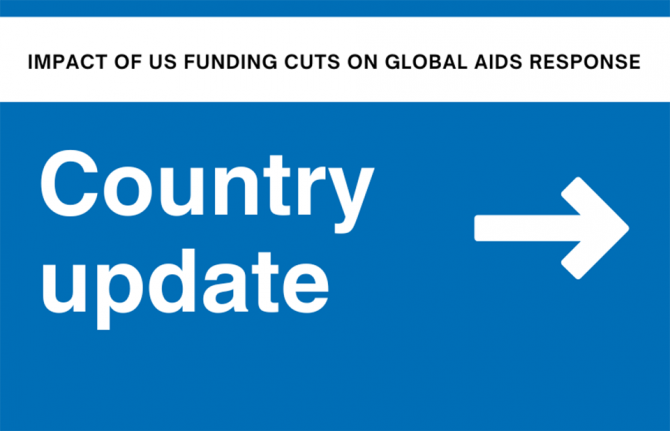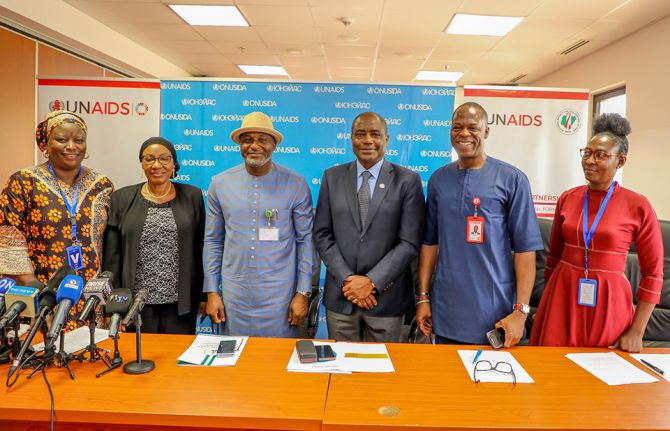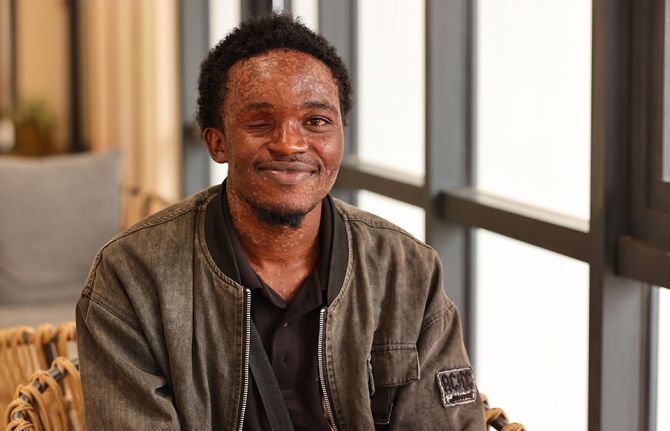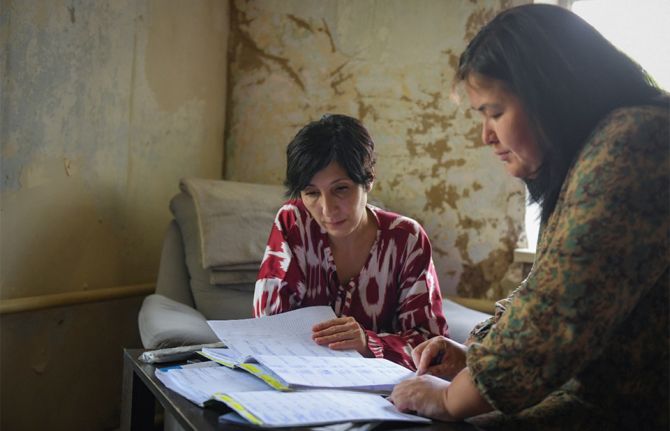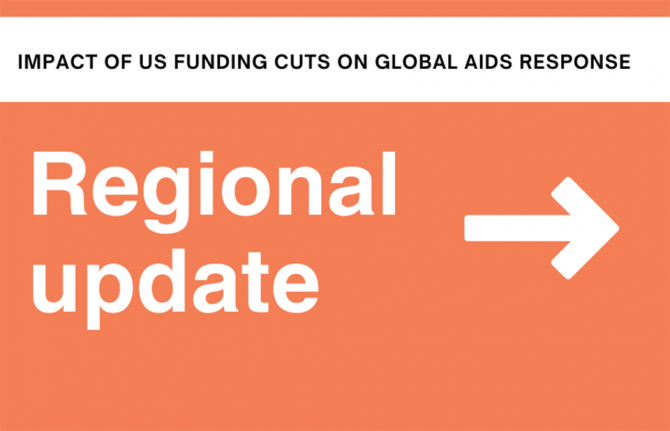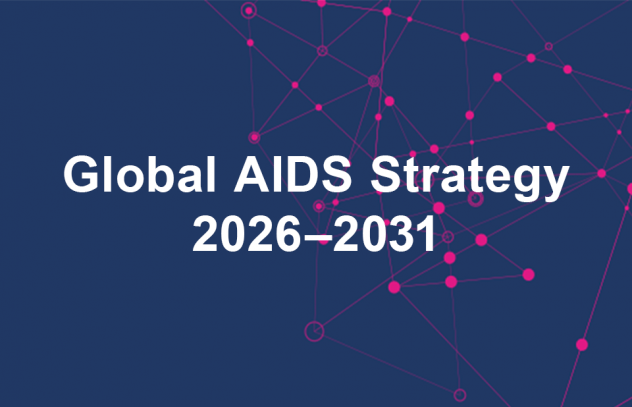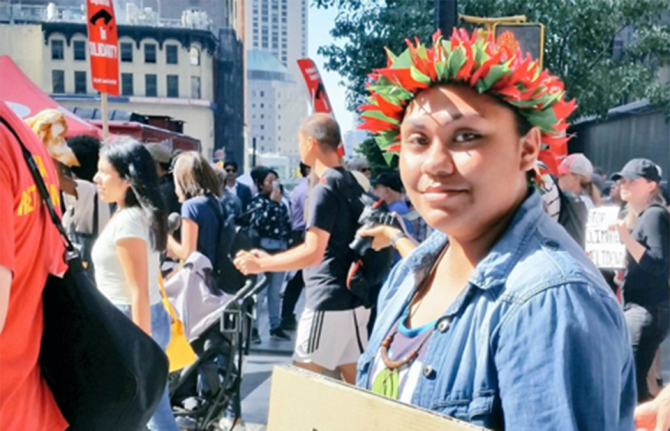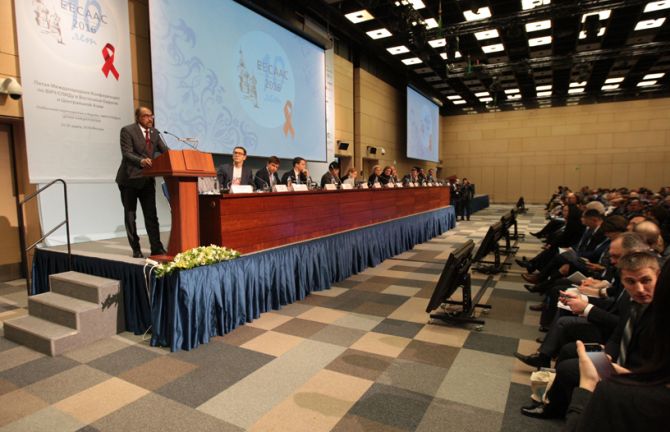
Feature Story
2nd Eastern Europe and Central Asia AIDS Conference ends
05 May 2008
05 May 2008 05 May 2008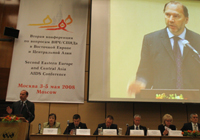
UNAIDS Executive Director Dr Peter Piot
addressed the opening plenary of the
Second Eastern European and Central
Asian AIDS Conference. 3-5 May 2008
Moscow, Russia.
The Second Eastern Europe and Central Asia AIDS Conference concluded on May 5 after three-days of dialogue centred on better responding to the region’s HIV epidemic.
Hundreds of participants from across the region as well as representatives from the UN and other international organizations gathered in Moscow to share ideas and map-out action on the challenges facing it.
The region is home to one of the world’s fastest growing HIV epidemics; in 2007, some 1.6 million people in the region were living with HIV, a 150% increase since 2001
Representing UNAIDS, Executive Director Dr Peter Piot addressed the opening plenary together with Dr Gennadiy G. Onischenko, Head of the Russian Federation’s federal health division, Michel Kazatchkine, Executive Director of The Global Fund, and Craig McClure, Executive Director of the International AIDS Society.
A hallmark of the conference was its bringing together of crucial voices in the region’s AIDS response, from scientists and politicians to civil society groups and representatives of people living with HIV.
In addition to a diverse programme of sessions focused on HIV prevention, treatment, care and support initiatives, space was dedicated to encourage informal and open dialogue on some of the issues central to understanding the region’s epidemic.
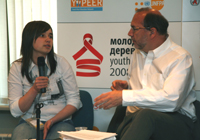
UNAIDS Executive Director Dr Piot met
with youth leaders, representatives from
local communities and other peers
committed to supporting Eastern Europe
and Central Asia in moving its AIDS
response forward.
Two spaces for such interactions were ‘Besedka’, a community dialogue space for people living with HIV organized by The Global Fund, UNAIDS and the Eastern European and Central Asian Union of people living with HIV Organizations; and Youth Village, sponsored by UNAIDS, the UN Population Fund and the Youth Peer Education Network.
UNAIDS Executive Director Dr Piot met with youth leaders, representatives from local communities and other peers committed to supporting Eastern Europe and Central Asia in moving its AIDS response forward.
The May 3-5 conference was the second for the region, with the first held in 2006, and the largest AIDS-focused conference to date in Eastern Europe and Central Asia.
2nd Eastern Europe and Central Asia AIDS Conferen
Partners:
The Global Fund to Fight AIDS, TB and Malaria
International AIDS Society
Press center:
Read UNAIDS Executive Director's speech ( en | ru )
Read press release
External links:
Visit the official web site of the conference
Publications:
2007 AIDS epidemic update regional summary - Eastern Europe and Central Asia

Feature Story
Second Eastern Europe and Central Asia AIDS Conference
02 May 2008
02 May 2008 02 May 2008
2nd Eastern Europe and Central Asia AIDS Conference ends
The Second Eastern Europe and Central Asia AIDS Conference concluded on May 5 after three-days of dialogue centred on better responding to the region’s HIV epidemic.
Read UNAIDS Executive Director's speech ( en | ru )
Read more
View photo gallery
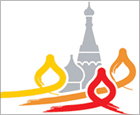
Second Eastern Europe and Central Asia AIDS Conference
A three-day conference on AIDS opens in Moscow on May 3 with a focus on the epidemic in the Eastern Europe and Central Asia region. UNAIDS Executive Director Dr Peter Piot will address the opening plenary and take part in sessions discussing the challenges facing the region in its AIDS response.
This year’s conference will provide dialogue and interaction among political and community leaders, scientists and other researchers, people living with HIV and representatives of civil society from across Eastern Europe and Central Asia.
The conference is hosted by the Russian Federation, with support from UNAIDS, The Global Fund to Fight AIDS, Tuberculosis and Malaria, and the International AIDS Society.
Read press release
Visit the official web site
Towards Universal Access in Eastern Europe and Central Asia: Delivering on AIDS today and in the longer term

Eastern Europe and Central Asia have faced significant increases in the numbers of new HIV infections in recent years. In 2007, an estimated 1.6 million people were living with HIV in Eastern Europe and Central Asia, a dramatic increase of 150% from the 630,000 people in 2001.
Read moreSecond Eastern Europe and Central Asia AIDS Confe
Partners:
The Global Fund to Fight AIDS, TB and Malaria
International AIDS Society
Press center:
Read UNAIDS Executive Director's speech ( en | ru )
Read press release
External links:
Visit the official web site of the conference
Publications:
2007 AIDS epidemic update regional summary - Eastern Europe and Central Asia

Feature Story
Human rights and gender in HIV-related legal frameworks
28 April 2008
28 April 2008 28 April 2008
The meeting identified challenges,
opportunities and ways to ensure the
incorporation of human rights and gender
issues in the adoption and amendment of
HIV-related legislation.
In adopting the Declaration of Commitment on HIV/AIDS in 2001 at the UN General Assembly Special Session on HIV/AIDS, Governments have fully recognized the importance of protecting human rights and gender equality through appropriate legal frameworks in national responses to HIV.
The enactment of laws that incorporate the protection of human rights and gender enable those vulnerable to HIV infection to access HIV prevention and also allow those living with HIV to be free from discrimination and human rights abuses. However, insufficient attention is often paid in national responses to HIV to the reform of discriminatory law or to working with Parliaments, judges and police to ensure appropriate enforcement of law. The result is that human rights abuses in the form of discrimination, gender inequality and violence against women, and violations of confidentiality and privacy continue to increase vulnerability to HIV infection and represent a barrier to effective responses to HIV.
In recognition of these concerns, UNAIDS in collaboration with UNDP, UNICEF, UNFPA, UNIFEM, WHO, AWARE/USAID, OSIWA, ECOWAS, OHCHR and the African and Arab Parliamentarian Forum, has held two workshops one in July 2007 and one from 16 – 18 April 2008 in Dakar to assist countries to consider where they stand on developing legislative frameworks in the response to HIV and how to ensure the best possible legislation.
Although the law cannot make HIV prevention or treatment happen - only sufficient HIV programmes and services can - the law can create an environment to empower people with knowledge, social support and protection from discrimination so behaviour change and access to HIV prevention, treatment and care can happen without negative consequences.

Some of the aspects of the Ndjamena Law
that were debated among the participants
involved mandatory HIV testing,
confidentiality or disclosure of HIV
information, the criminalization of HIV
transmission, and the rights of women and
other vulnerable groups.
In 2004, the African and Arab Parliamentarians Forum for Population and Development adopted the “Ndjamena Law” on the prevention, care and control of HIV. This was a flexible and adaptable legal instrument that States could use to guide their legislation development process according to their legal, social, political and cultural environment. The law contained many positive aspects, but it has also become clear that some provisions in the Ndjamena Law could be substantially improved in order to best meet two of the critical concerns in the response to AIDS: that of protecting public health and that of protecting human rights.
Participants at the April 2008 workshop represented 15 West and Central Africa countries and included parliamentarians, human rights specialists, jurists, civil society members including people living with HIV and representatives of National AIDS Councils. The meeting identified challenges, opportunities and ways to ensure the incorporation of human rights and gender issues in the adoption and amendment of HIV-related legislation.
Some of the aspects of the Ndjamena Law that were debated among the participants involved mandatory HIV testing, confidentiality or disclosure of HIV information, the criminalization of HIV transmission, and the rights of women and other vulnerable groups.

Participants at the April 2008 workshop
represented 15 West and Central Africa
countries and included parliamentarians,
human rights specialists, jurists, civil
society members including people living
with HIV and representatives of National
AIDS Councils.
UNAIDS and other partners recommended several documents developed since the promulgation of the Ndjamena law that can be used as guidance in order to amend HIV-related legislation in accordance to international legal standards and to ensure that the language used to enact the law does not promote human rights abuses. These documents include the Political Declaration on HIV/AIDS (2006), the International Guidelines on Human Rights and HIV, Consolidated Version (2006), Taking Action against HIV, Handbook for Parliamentarians (2007) and “UNAIDS Recommendations for Alternative Language in the Ndjamena Legislation on HIV” (2008).
Participants agreed that the process of incorporating human rights and gender in HIV related legal frameworks underlines the need to develop legal measures not as tools for coercion but as instruments to empower people through respect of their human rights. Punitive or coercive legal measures exacerbate already existing HIV stigma and discrimination and drive people away from HIV prevention and treatment programmes, thus undermining the effectiveness of national responses to the epidemic.
“Protecting the rights of people living with HIV does not mean less protection for other members of the community. On the contrary, protecting the rights of people living with HIV and members of vulnerable groups promotes access to HIV prevention, care and support services which benefit the whole community and make for a more effective response to HIV,” said Dr Meskerem Grunitzky-Bekele, Director of the UNAIDS Regional Support Team for West and Central Africa.
Human rights and gender in HIV-related legal fram
Press centre:
Publications:
Political Declaration on HIV/AIDS (pdf, 1.84 Mb)
International Guidelines on Human Rights and HIV, Consolidated Version (pdf, 932 Kb)
Taking Action against HIV, Handbook for Parliamentarians (pdf, 1.26 Mb)
UNAIDS recommendations for alternative language to some problematic articles in the N’Djamena legislation on HIV (pdf, 191 Kb)

Feature Story
ILO sees significant improvement in workplace attitudes to HIV
25 April 2008
25 April 2008 25 April 2008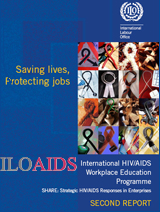
"Saving lives, protecting jobs" is a
new report from the ILO project
Strategic HIV/AIDS Responses in
Enterprises
Better HIV policies and practices in the workplace have led to more supportive attitudes towards co-workers living with HIV, the International Labour Organization (ILO) reports in its new publication “Saving lives, protecting jobs”.
The report summarizes the activities of the Strategic HIV/AIDS Responses in Enterprises (SHARE) project active in over 650 workplaces in 24 countries, covering almost one million workers.
“Several countries offer outstanding examples of how they address HIV/AIDS using the workplace for prevention, care and support, and to tackle stigma and discrimination,” said Director of the ILO Programme on HIV/AIDS and the world of work, Dr Sophia Kisting.
The report includes data on the impact of workplace HIV activities and non-discrimination policies. This data was gathered by the ILO over the past four years from six pilot countries – Belize, Benin, Cambodia, Ghana, Guyana and Togo.
In each of the six pilot countries, workers demonstrated “a marked improvement” in attitudes towards people living with HIV and employers’ and workers’ groups are increasingly making use of the ILO’s Code of Practice on HIV/AIDS
In Ghana, the percentage of workers who reported having a supportive attitude towards co-workers living with HIV increased from 33 per cent to 63 per cent. In all six countries surveyed, the proportion of workers who reported supportive behaviour towards co-workers living with HIV rose from 49 per cent to 63 per cent on average during the life of the programme.
In addition to tracking changes in attitudes related to HIV, the new report also presents a series of good practices and data collected from workplaces, ministries of labour, employers’ and workers’ organizations collaborating with the ILO.
The data also showed a rise in all six countries in the percentage of workers who reported using condoms with non-regular partners from 74 per cent to 84 per cent.
Success in developing HIV policies is firmly rooted in the collaboration between workers’ and their employers’. With 33 million people living with HIV, the majority of whom are still working and in their most productive years, the workplace is an important forum for addressing HIV.
It can be one of the most effective settings for responding to the AIDS epidemic as workplaces are communities where people come together to discuss and learn from one another. Existing structures and facilities can also be used for prevention, care and support services.
ILO plan to hold a series of events in a campaign to highlight HIV and the world of work. The report will also be presented to the global AIDS community at the International AIDS Conference in Mexico on 3-8 August.
ILO sees significant improvement in workplace att
Policy and guidelines:
Key operational guidelines of the UNAIDS Programme
Technical Policies of
the UNAIDS programme
Workplace - Umbrella Policies
Cosponsors:
International Labour Organization (ILO)
Feature stories:
AIDS: everybody’s business (26 January 2006)
External links:
Stories from the field - The ILO/USDOL International HIV/AIDS Workplace Education Programme
Publications:
Saving lives, protecting jobs. SHARE Report April 2008 (3.7 Mb, pdf) ( fr )
ILO Code of Practice on HIV in the workplace

Feature Story
UNFPA: Bringing HIV services directly to communities in Côte d'Ivoire
21 April 2008
21 April 2008 21 April 2008This story was first published on UNFPA.org
SAN PEDRO, Côte d’Ivoire
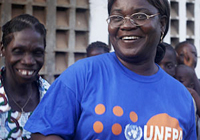
Midwife Odette Koffi-Brou.
Photo: Jane Hahn/Panos/UNFPA
“I’m here because I have four children,” explains a 48-year-old sex worker, who asked that her name not be used. Today she is being tested for HIV at a mobile health clinic, run by the volunteers of the Association for the Promotion of Mother, Child and Family Health (APROSAM) which is supported by the United Nations Population Fund (UNFPA).
After her husband died in an accident, she ran away from her home in Nigeria rather than marry his younger brother as is the custom in her region. With no means to support her children, or pay for their school fees, she turned to sex work to ensure her family’s survival. She earns as little as $2 per client and sends the money to her sister in Abidjan, where her children live.
Midwife Odette Koffi-Brou helped create APROSAM to serve the health needs of the residents of Bardot, one of the largest shantytowns in West Africa. Bardot is home to 80 per cent of San Pedro’s 160,000 residents. Each of its 24 districts is served by two APROSAM volunteers.
For Koffi-Brou, people who engage in sex work should not be stigmatized, but should be treated like any other client in need of health services.
“It’s not our role to talk them out of prostitution,” Koffi-Brou says. “Our role is to sensitize them and protect them against HIV.”
In Bardot, the majority of HIV infections are sexually transmitted or associated with parent-to-child transmission. HIV vulnerability, like poor sexual and reproductive health generally, is exacerbated by social drivers including poverty, gender inequality and social marginalization.
Bringing services directly to the people
Instead of trying to get people living in poverty to visit a doctor’s office, the clinic delivers services directly to their doors in the heart of the shantytown.
Inside the mobile clinic, a pristine reception area leads to the examination room with gleaming medical equipment. The clinic is clean, bright and very professional and is serviced by one doctor, one counsellor and a technician.
Dr. Pascal Attobrat is a volunteer doctor working for the mobile clinic. “We see how AIDS has invaded this population. It is very important to teach the population about how to prevent and treat this disease,” he explains. “Everybody is involved with this disease.”
“The mobile clinic plays a very important role,” said Philippe Delanne, the Côte d’Ivoire Representative for UNFPA, the United Nations Population Fund. “With its trained personnel and volunteers, it can reach multiple towns and villages targeting sex workers, internally displaced persons and those made vulnerable by the crisis in Côte d'Ivoire who might otherwise not have access to health services.”
Staying healthy and positive
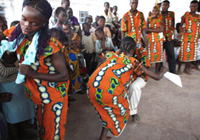
Local villagers come out to greet the
UNFPA team's arrival outside of a new
extension of the Bardot Center in
San Pedro. Photo: Jane Hahn/Panos/UNFPA
Clinic volunteer Theodore Magui is HIV-positive. He is happy to be an example showing that you can be living with HIV and still in good health. When clients see a healthy person living with the virus that they also carry, they feel more comfortable in confiding in him.
Knowing your HIV status is empowering, Theodore insists. “When you live in ignorance and fall sick, it’s not good,” he says. “It’s better to have the test, know your status and get the medicine you need.
Stemming the spread of the disease
APROSAM volunteers also visit the homes of those living with the virus to offer support, prevent mother-to-child transmission and provide counselling about treatment.
HIV-positive volunteer Eloise Tohsede threads her way through the maze of shanty shacks. Tonight Eloise is visiting 32-year-old Cecile, whose baby girl was born five days earlier. Cecile’s partner left her when she tested positive for HIV. Her young son also tested positive for the virus, but she doesn’t know yet if her infant has contracted the disease. Eloise urges Cecile to seek treatment using her status certificate, which will enable her to get low-cost medication.
“I’m telling my sisters, ‘You are not alone. Your life can continue. You can take medicine and have hope,’” says Eloise, her smile lighting up the dim room. “If you take your medicine and continue to see a doctor, you can live a long time.”
Community-based AIDS response
UNFPA recognizes that a community-based approach, like that of APROSAM, is essential when responding to the AIDS epidemic and stemming its spread. UNAIDS supports this approach.
“Community-based initiatives are an extremely important part of a multisectoral national response to the AIDS epidemic as they can reach populations who are in real need and who otherwise have no means of access,” said UNAIDS Country Coordinator Cote d’Ivoire, Aoua Paul Diallo Diawara.
“Reaching people with the HIV services they need most is a critical step and a vital step towards achieving universal access to HIV prevention, treatment and care.”
UNFPA is funding the completion of a new maternity clinic in neighbouring Zimbabwe, mirroring the successful Bardot model. The equipped centre, which will offer HIV testing and treatment as well as other maternal and reproductive health services, will cost about $80,000 to complete.
UNFPA: Bringing HIV services directly to communit
Related

Feature Story
New EDUCAIDS Resource Pack to support education ministries
18 April 2008
18 April 2008 18 April 2008
Recognizing the vital role of the education sector in national responses to HIV, the UNAIDS Committee of Cosponsoring Organizations (CCO) launched EDUCAIDS in March 2004.
EDUCAIDS is the UNAIDS Global Initiative on Education and AIDS. It is led by UNESCO in collaboration with governments, UN partners, and civil society organizations. The initiative seeks to promote, develop and support comprehensive education sector responses to HIV.
EDUCAIDS has two primary aims: to prevent the spread of HIV through education and to protect the core functions of the education system from the worst effects of the epidemic including the loss of teachers and other education professionals to the disease.
EDUCAIDS Resource Pack
As countries put in place and implement comprehensive, scaled-up responses towards universal access to HIV prevention programmes, treatment, care and support, EDUCAIDS aims to mobilize the education sector and has recently published a Resource Pack developed by UNESCO in close collaboration with a range of UN agencies and international organizations, including members of the UNAIDS Inter-Agency Task Team (IATT) on Education.
This resource pack is designed to support ministries of education and other stakeholders at the country level. It aims to give technical guidance on developing and implementing policies, determining resource allocations and implementing programmes for education and HIV.
In 2007, representatives from 60 countries participated in EDUCAIDS-related activities, with progress achieved in developing comprehensive HIV and AIDS education strategies in over half of these. National priority actions were identified in 39 countries for continued follow-up through seven sub-regional capacity-building workshops.
Capacity for policy development and programme implementation was further enhanced through technical assistance and information exchange including two UNESCO-supported sub-regional consultations in East and Southern Africa on addressing the needs of HIV-positive teachers and on strengthening the role of schools in HIV treatment, care and support.
Currently available in English, the Resource Pack will soon be published in Arabic, Chinese, French, Portuguese, Russian and Spanish. All language versions will also be included in a forthcoming CD-ROM.
Limited copies of the Resource Pack can be ordered free-of-charge by emailing aids@unesco.org and specifying the number of copies and preferred language version.
The resource pack contains the following materials:
- EDUCAIDS Framework for Action
This outlines five essential components of comprehensive education sector responses to HIV implementation support available through the EDUCAIDS initiative. This version is an update of the 2006 Framework, taking into account the 2007 UNESCO Strategy to Respond to HIV, as well as feedback from six recent regional and sub-regional meetings and workshops involving nearly 40 countries. - EDUCAIDS Technical Briefs
These are 35 two-page summaries of key issues related to a comprehensive education sector response. Each brief can be used as a stand-alone reference, and together they offer comprehensive and flexible guidelines on the continuum of activities required to respond to the epidemic at the country level. - EDUCAIDS Overviews of Practical Resources
These overviews provide guidance on the technical and operational aspects of the response. Each includes a resource summary list and a two-page analysis of the included resources identifying crucial resource gaps, needs for further research, and additional online resources.
New EDUCAIDS Resource Pack to support education m
Related
 “Who will protect our young people?”
“Who will protect our young people?”

02 June 2025

Feature Story
Carrying the Olympic flame for PLHIV in Tanzania
18 April 2008
18 April 2008 18 April 2008
At the Olympic torch press conference held
in advance of the relay, Dhamiri Mustapha
spoke about her experience of living with
HIV and urged young people to protect
themselves. Photo credit: UNAIDS.
Dhamiri Mustapha, a young Tanzanian woman living with HIV, was one of the 80 dignitaries who carried the Olympic flame during the five-kilometre torch relay in Dar Es Salaam, Tanzania, on 13 April.
Dhamiri was thrilled to take part in such a high–profile event in her own country, and it provided a welcome opportunity for her to speak out on behalf of people living with HIV (PLHIV) in a public forum. “I’m happy to represent other Tanzanians living with HIV in this positive way”, she said. Dhamiri is a board member of the Tanzania National Council of People Living with HIV and AIDS (NACOPHA) and a member of the Network of Young People Living with HIV and AIDS (NYP+).
Her tiny frame and shy smile betray the twenty-three-year old’s extraordinary energy and courage. At the Olympic torch press conference held in advance of the relay, she spoke about her experience of living with HIV and urged young people to protect themselves. Dhamiri is not afraid to address the issue of condom use in the region. “Condom distribution is a major problem, given that there is hesitancy among some sectors of society to support their use in HIV prevention. More condoms are necessary for young people to reduce infections among this group,” she stated.
A student at Kibaha Teachers Training College, Dhamiri expects to graduate in 2009, when she hopes to find a place teaching primary school. Her studies are being sponsored by the WAMA Foundation, a non-profit organization founded by the First Lady of Tanzania, Mama Salma Kikwete. With assistance from the UN, the WAMA Foundation provides teachers with training on HIV. It also supports young positive Tanzanians, like Dhamiri, to become future educators.
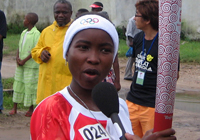
The participation of Dhamiri in the
Olympic torch relay was facilitated by the
International Olympic Committee (IOC)
and UNAIDS. Photo credit: UNAIDS.
The participation of Dhamiri in the Olympic torch relay was facilitated by the International Olympic Committee (IOC) and UNAIDS and is the result of their partnership, which aims to emphasise the role of sport in HIV prevention and promote AIDS awareness activities with coaches, athletes and sports personalities at global and national levels.
In a joint message IOC President Jacques Rogge and Dr Peter Piot, Executive Director of UNAIDS, underlined how sport can break down barriers, fight discrimination and make a difference in the AIDS response. "One third of the approximately 33 million people living with HIV are young people under the age of 25, many of whom are involved in sports, either as spectators or as participants. Sport offers a perfect platform to make young people aware of the issue, to promote preventive messages, and to ensure that persons living with HIV are not discriminated against. Discrimination towards a country, or a person on grounds of race, religion, politics, gender, or otherwise, is incompatible with the principles of the Olympic Movement.”
As part of the collaboration, UNAIDS and the IOC have developed the publication ‘‘Together for HIV Prevention: A Toolkit for the Sports Community”, featuring information about HIV and includes messages from international sport stars, some of whom are HIV-positive. A Swahili version of the toolkit is being produced and is expected to be launched in Tanzania in June 2008.
The UNAIDS and IOC partnership is also sponsoring the production and distribution of HIV awareness cards and red ribbons which will be inserted in the welcome kits of the 11,000 athletes taking part in the XXVIII Olympic Games in Beijing in August.
Carrying the Olympic flame for PLHIV in Tanzania
Partners:
International Olympic Committe
External links:
Publications:
Together for HIV Prevention: A Toolkit for the Sports Community
Related

Feature Story
Towards Universal Access in Eastern Europe and Central Asia: Delivering on AIDS today and in the longer term
14 April 2008
14 April 2008 14 April 2008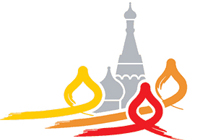
The Second Eastern European and Central
Asian AIDS Conference will take place in
Moscow, Russia, 3-5 May 2008.
Eastern Europe and Central Asia have faced significant increases in the numbers of new HIV infections in recent years. In 2007, an estimated 1.6 million people were living with HIV in Eastern Europe and Central Asia, a dramatic increase of 150% from the 630,000 people in 2001.
Such an escalating epidemic threatens to impact the workforce and put a heavy burden on the health sector. In order to urgently address this, the Government of the Russian Federation with support from UNAIDS and the International AIDS Society (IAS) joined together to organize the first Eastern European and Central Asian AIDS Conference (EECAAC) in May 2006.
This was a groundbreaking event –the first-ever Russian-speaking AIDS conference– and provided an unprecedented regional forum for more than 1500 delegates who included political leaders, health professionals, scientists, representatives of voluntary organizations, people living with HIV and donors involved in the response to the AIDS epidemic across the region. It was heralded a success and decided to be held every two years.
Second Eastern Europe and Central Asia AIDS Conference
The second EECAAC will take place in Moscow, Russia, 3-5 May 2008. The conference will once again provide dialogue and interaction among political and community leaders, scientists and other researchers, people living with HIV and representatives of civil society from across the region. They hope to take stock of the situation, share best practices and mobilize action in response to the challenges of the AIDS epidemic.
The government of the Russian Federation is the largest financial supporter of the Second Eastern European and Central Asian AIDS Conference, confirming the country’s political commitment to the AIDS response.
The Co-chairs of the 2008 Conference Organizing Committee include Global Fund Executive Director Michel Kazatchkine, IAS Executive Director Craig McClure and UNAIDS Executive Director Dr Peter Piot. Dr Piot will very actively participate at this year’s event.
This conference occurs at a crossroad in the regional AIDS response, in particular in Russia, where there are strong indications of growing country leadership and commitment, increased domestic resources, and breakthroughs in relation to the Universal Access to HIV prevention, treatment, care and support. The conference is an opportunity for governments to seek credit for these positive developments, but also for activists and international media to emphasize the persisting gaps and shortcomings.
“This conference is an important forum in which leaders and experts can gather and discuss the issues impacting the AIDS response in this region,” said UNAIDS Regional Support Team Director a.i., Sergei Furgal. “Strong leadership and evidence-informed responses are key to curbing the rising epidemics in Eastern Europe and Central Asia,” he continued.
Accelerating Access to HIV Prevention, Treatment and Care for All
“Accelerating Access to HIV Prevention, Treatment and Care for All” is the official conference theme. This theme will allow many aspects of an expanded and improved response to the epidemic to be examined during plenary and satellite sessions and skills-building workshops. These include efficient systems to provide quality treatment balanced with the robust prevention programs, especially targeting key populations including people who inject drugs, men who have sex with men, women, young people, sex workers and their clients.
The conference will also feature a Youth Village – a community dialogue space to increase the visibility of HIV issues among young people and to promote youth involvement in addressing HIV in Eastern Europe and Central Asia.
A Community Dialogue Space, “Besedka”, will provide community representatives with a space for open group discussions on key issues, dialogue with international leaders, cultural and interactive events, presentations and media events.
Regional forum to support national responses to HIV
Although there are national differences in the nature of the epidemics within Eastern Europe and Central Asia, the drivers of the epidemic – primarily injecting drug use, with heterosexual transmission increasing – and many of the challenges to improving access to services are similar across the region.
The upcoming Second Eastern European and Central Asian AIDS Conference will be an important forum for vital discussion helping countries to understand what is driving their epidemics and how to reach key populations at higher risk of HIV infection.
Towards Universal Access in Eastern Europe and Ce
Feature stories:
Eastern Europe and Central Asia are facing the challenge (14 May 2006)
External links:
Second Eastern Europe and Central Asia AIDS Conference
UNAIDS in Russia

Feature Story
A stronger civil society voice in the UNAIDS work
11 April 2008
11 April 2008 11 April 2008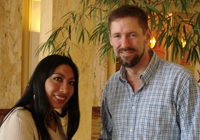
L to R: Violeta Ross Quiroga, the PCB
NGO alternate delegate from Latin
America and the Caribbean with Marcel
Van Soest, Executive Director of the World
AIDS Campaign (WAC). 02 April 2008,
Geneva. Photo credit: UNAIDS
Civil society plays a key role in the response to the AIDS epidemic in countries around the world. Therefore it is imperative for UNAIDS to secure input from the full spectrum of civil society, including people living with HIV, at its Programme Coordinating Board meetings.
UNAIDS is guided by a Programme Coordinating Board (PCB) which is composed of representatives of 22 governments from all geographic regions, the ten UNAIDS Cosponsoring organizations, and five representatives of nongovernmental organizations (NGOs) who are elected on a regional basis. The UNAIDS PCB NGO Delegation is the first civil society delegation formally represented on a UN governing board.
In an effort to further enhance participation of civil society in policy decision-making at the global level, the PCB NGO Delegation has created a Communications Facility (CF), an independent mechanism that will strengthen the capacity of the delegation to bring forward a unified and consolidated message from their constituencies to the Board meetings of UNAIDS. Therefore, The CF will compile regional and country level civil society priorities on AIDS for the NGO Delegation to advocate for them at the global level.
This CF was established on 2 April 2008 with the recruitment of a consortium comprising the World AIDS Campaign (WAC) and Health & Development Networks (HDN) which will be its host for the next two years with funding provided by UNAIDS. This follows a competitive bidding process that was launched by the UNAIDS Secretariat after the 20th meeting of the PCB agreed on the establishment of a Communication Facility. The PCB will evaluate the progress made by the CF at the end of the two year period.
Under the leadership of the PCB NGO Delegation, the CF plans to work in two ways. On the one hand, it will ensure that the broad and diverse community voices are heard and influence the development of international policies that meet their needs. To that end, it will host conference calls for the Delegation; draft of the Delegation stakeholders map and related information needs; capacity-building for Delegation members on presentation and negotiation skills or drafting the Delegation’s annual report.
On the other, it will better inform civil society about the decisions and recommendations adopted at global level by the PCB by developing and distributing PCB related fact sheets or post-PCB meeting summaries; and develop an interactive web site among other activities.
The CF will support the non-governmental delegation by also linking them to other civil society delegations focusing on HIV such as those to the Global Fund to fight AIDS, TB and Malaria (GFATM) and UNITAID, and actively develop and nurture a ‘pool’ of civil society representatives who will provide technical support and advice to the NGO Delegation on issues relevant to the global HIV issues and the UNAIDS PCB agenda.
‘’For NGOs sitting on the UNAIDS board, it is important to have a strong independent and coordinated communication and outreach tool to ensure that the community voices are faithfully represented in the board”, said Violeta Ross Quiroga, the PCB NGO alternate delegate from Latin-America and the Caribbean.
“The voices of communities must be heard and they must include all segments of the wider civil society working towards Universal Access targets. This stands as one of the core goals of the Communication Facility, which is also another step towards the achievement of the GIPA principle.’’ She added.
The 22nd Meeting of the Programme Coordinating Board will take place in Chiang Mai, Thailand, 23 - 25 April 2008.
A stronger civil society voice in the UNAIDS work
External links:

Feature Story
Developing strategies to work with FBOs
10 April 2008
10 April 2008 10 April 2008
The faith community makes a major
contribution to the worldwide response to
AIDS, especially in poorer developing
countries, where faith-related facilities may
be the sole source of health assistance.
Seventy percent of the world’s population identify themselves as members of a faith community, which situates communities of faith in a privileged position to influence people’s behaviour and attitudes, even in relationship with the AIDS epidemic.
Organizations motivated by religious faith - often called Faith-based organizations (FBOs) - have been involved in the AIDS response since the earliest days of the epidemic and have often been among the first to respond, providing services, education and care.
UNAIDS in collaboration with UNFPA, WHO, ILO and UNDP will bring together a working group of partnership officers from across the UNAIDS Secretariat and Cosponsor organizations and FBO representatives to outline a strategy for future work with faith-based organizations on AIDS issues. The meeting, which will take place from 9 – 11 April in Geneva, will aim to establish a strategy for a more coordinated response to partnership work among all stakeholders involved in the AIDS response.
Religious communities, mosques, temples, churches, hospitals and clinics have reached out to provide support to those living with and affected by HIV. Many have been involved in the response since the earliest days of the epidemic. Their leadership has great influence in the lives of many people, and leaders speaking out responsibly about AIDS can make a powerful impact at both community and international level.

Participants will analyse how to best work
with the wide range of FBOs working on
AIDS, discussing the opportunities and
challenges that they offer.
However the response of the religious community can also be negative. People living with HIV have been stigmatized by religious leaders and communities of faith. Approaches to HIV prevention methods and attitudes towards people at increased risk of HIV infection such as men who have sex with men, have sometimes hindered the response. Much work remains to be done to eradicate stigma and discrimination.
The faith community makes a major contribution to the worldwide response to AIDS, especially in poorer developing countries, where faith-related facilities may (in some areas) be the sole source of health assistance. The ARHAP/WHO report (2007) found that faith-related organizations were providing 33 to 40 percent of all HIV health care and treatment services in Zambia and Lesotho, and calculated that between 30 and 70 percent of all healthcare infrastructure across the continent is operated by faith-based groups.
Furthermore, it is clear that faith communities are ideally placed to respond in the broadest way to the epidemic’s challenges, not just as providers of services but also (and perhaps most importantly) as networks and movements that reach right to the heart of community and family life. This makes them key players in a holistic, multifaceted, integrated response to AIDS. It is for this reason that UNAIDS is currently exploring a deeper engagement with ‘faith-based organizations’.
Participants at this meeting will analyse how to best work with the wide range of FBOs working on AIDS, discussing the opportunities and challenges that they offer. The working group will produce a three to five years strategy that will guide the UNAIDS and its cosponsors efforts to consolidate a coordinated response to AIDS with the faith community.

